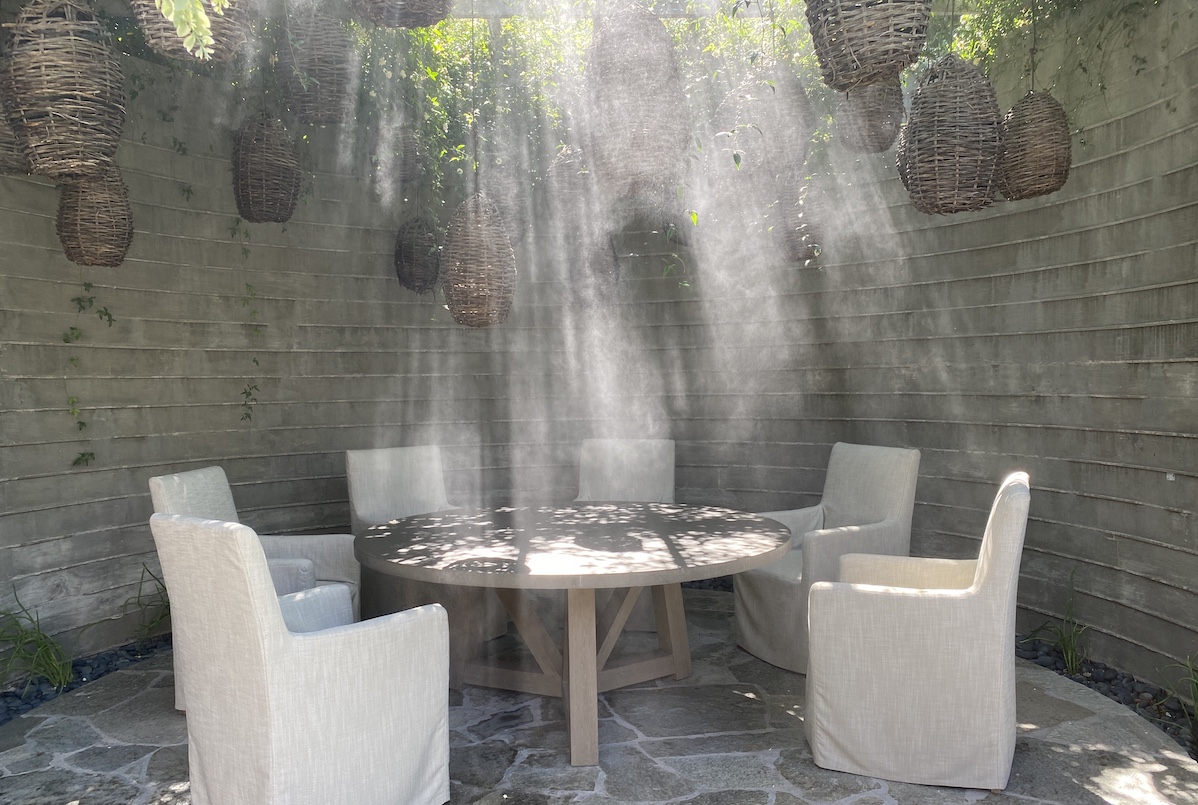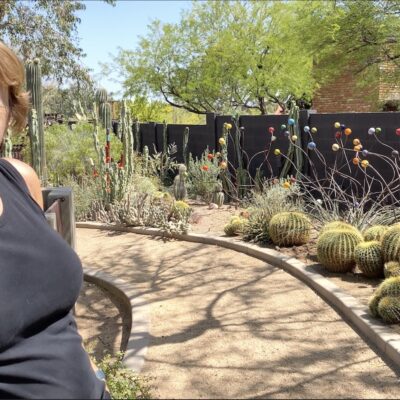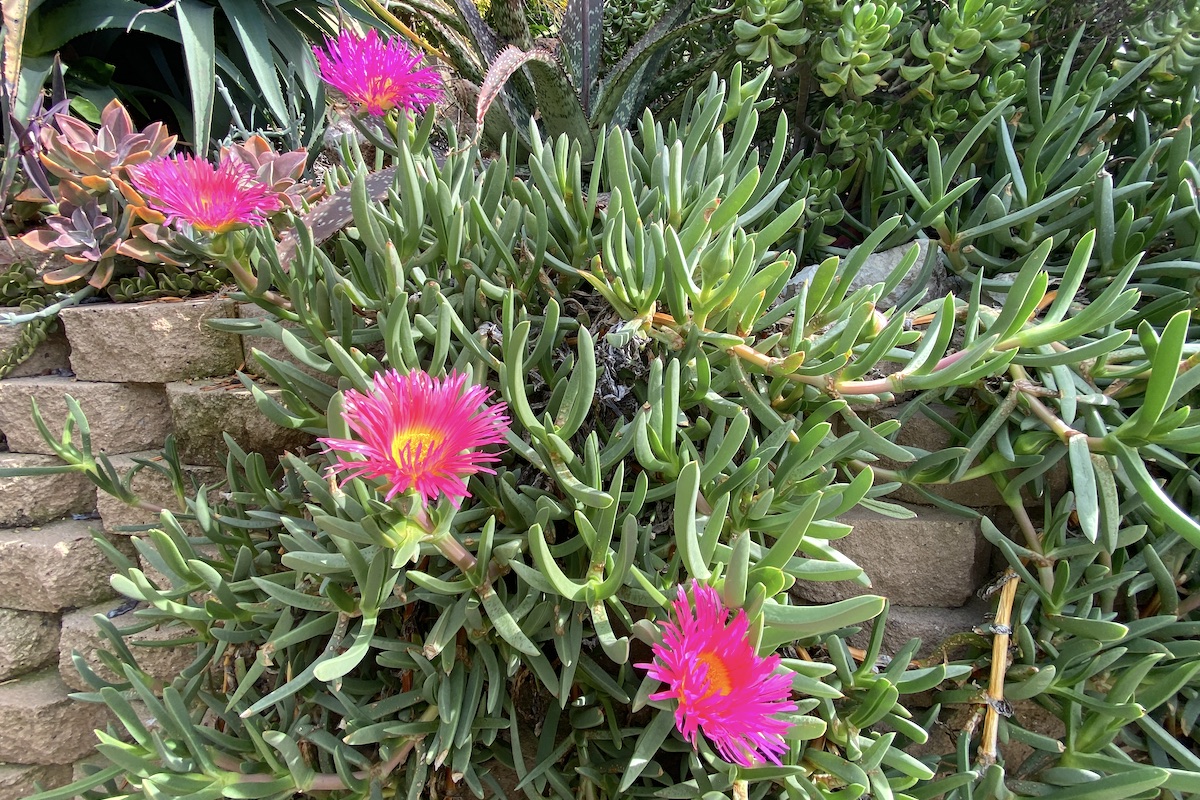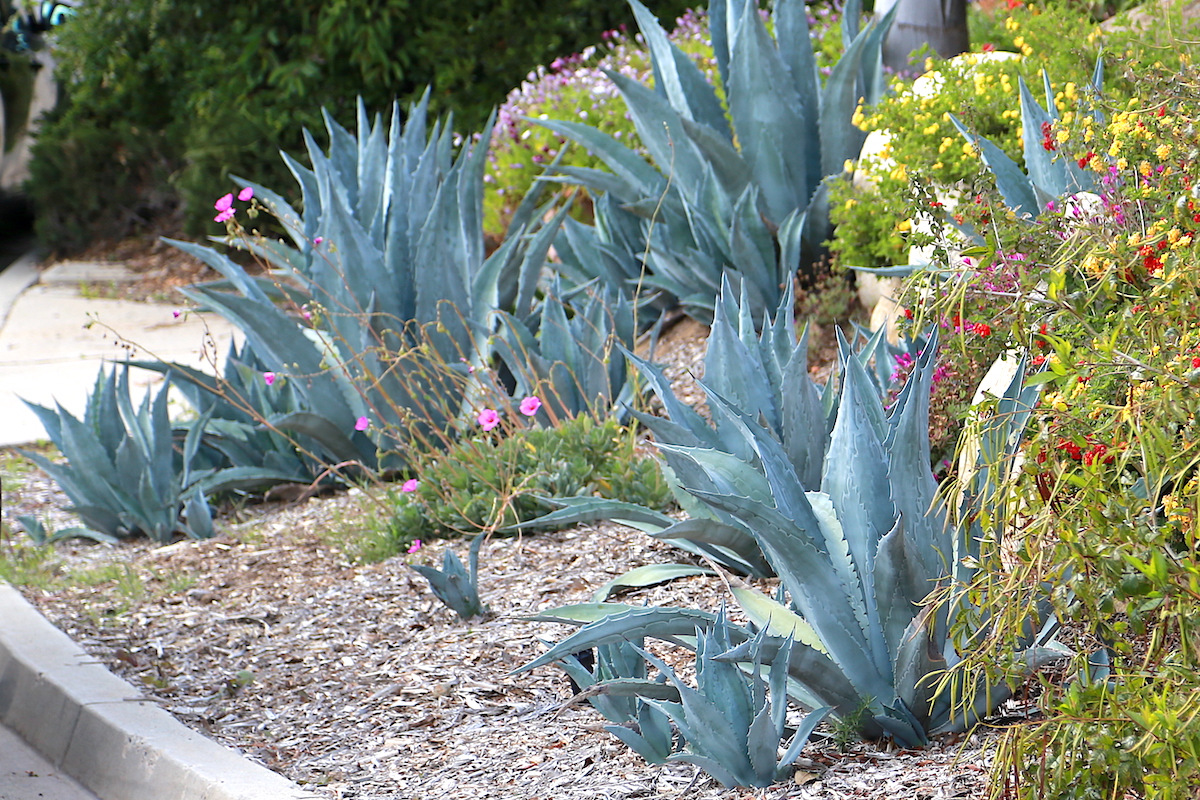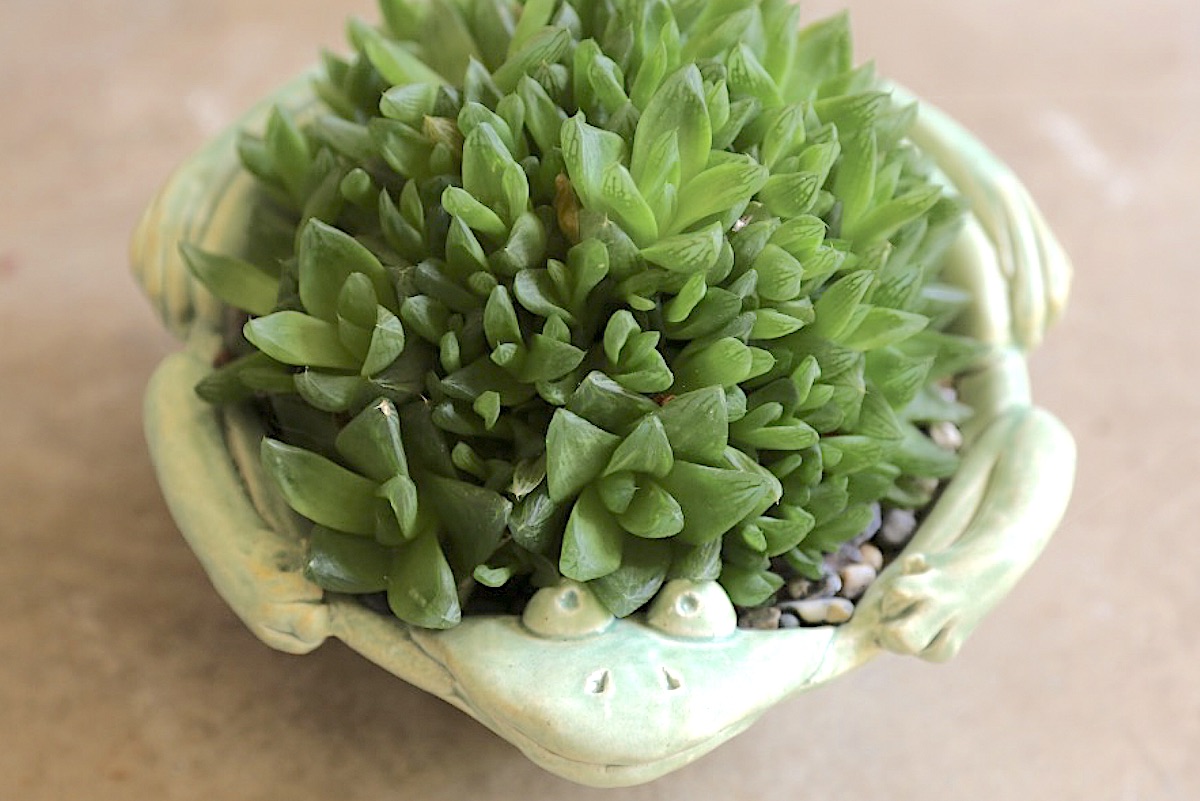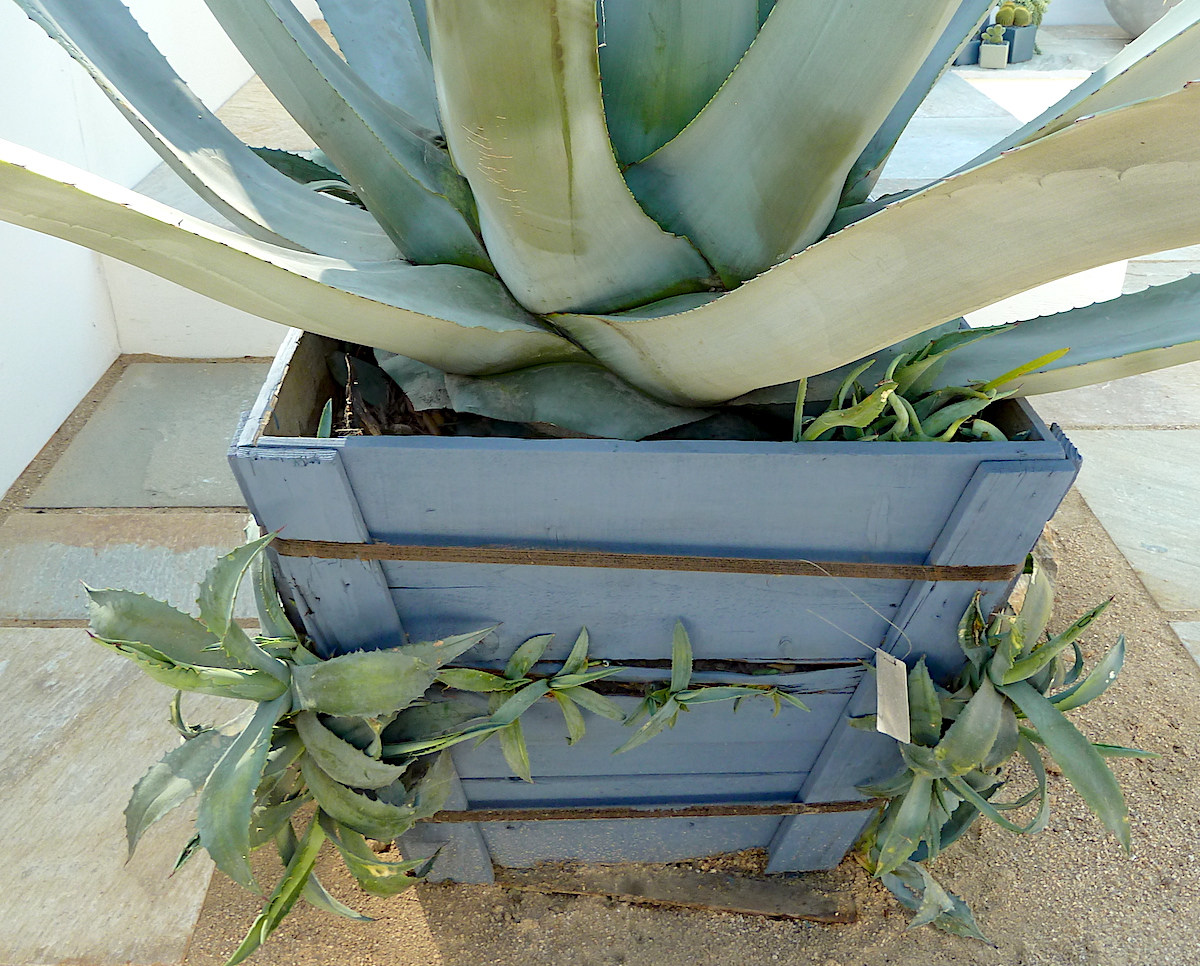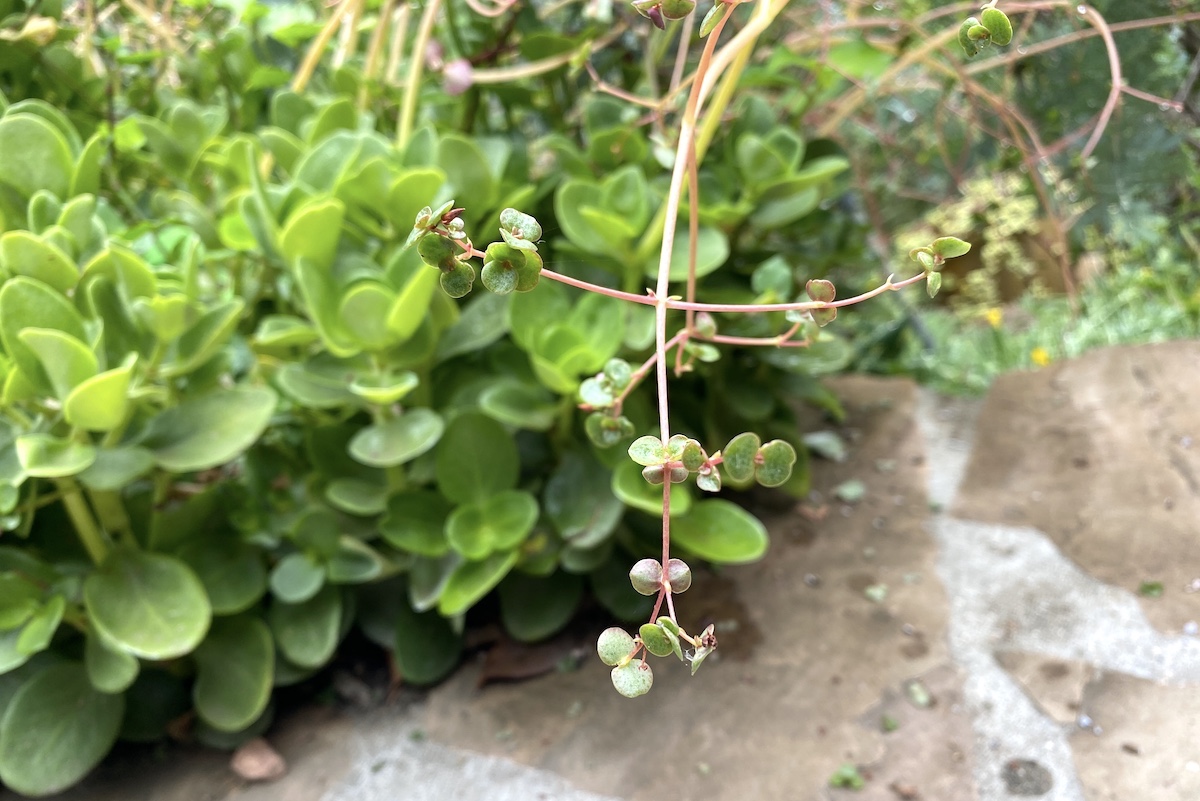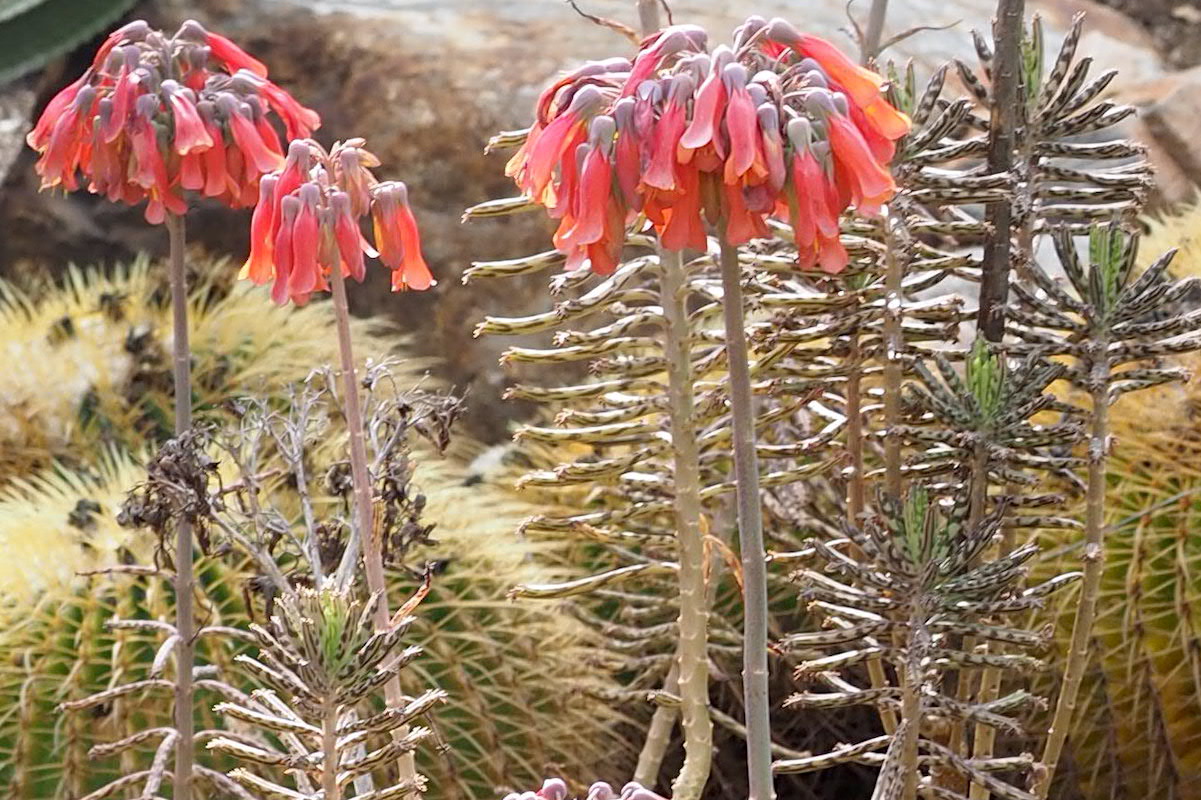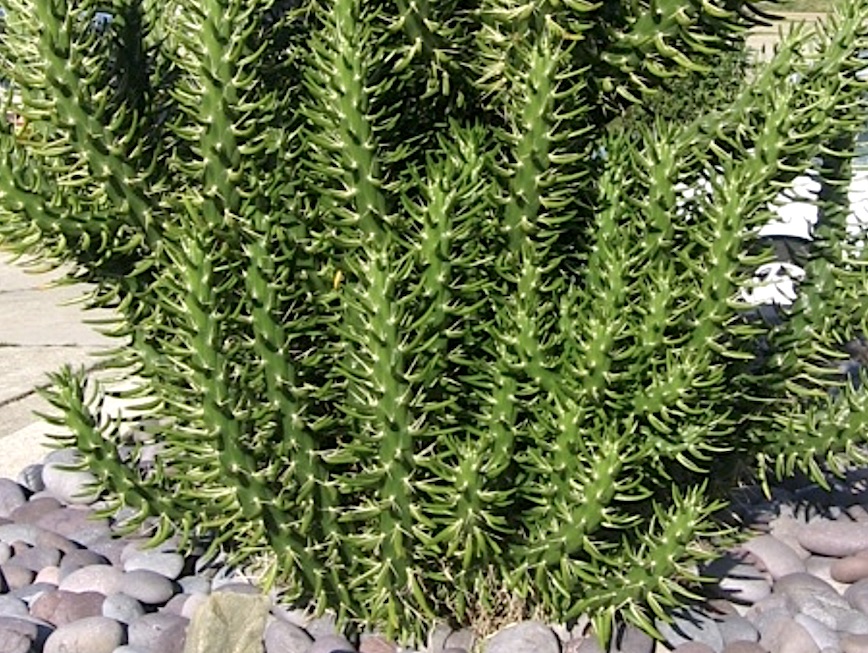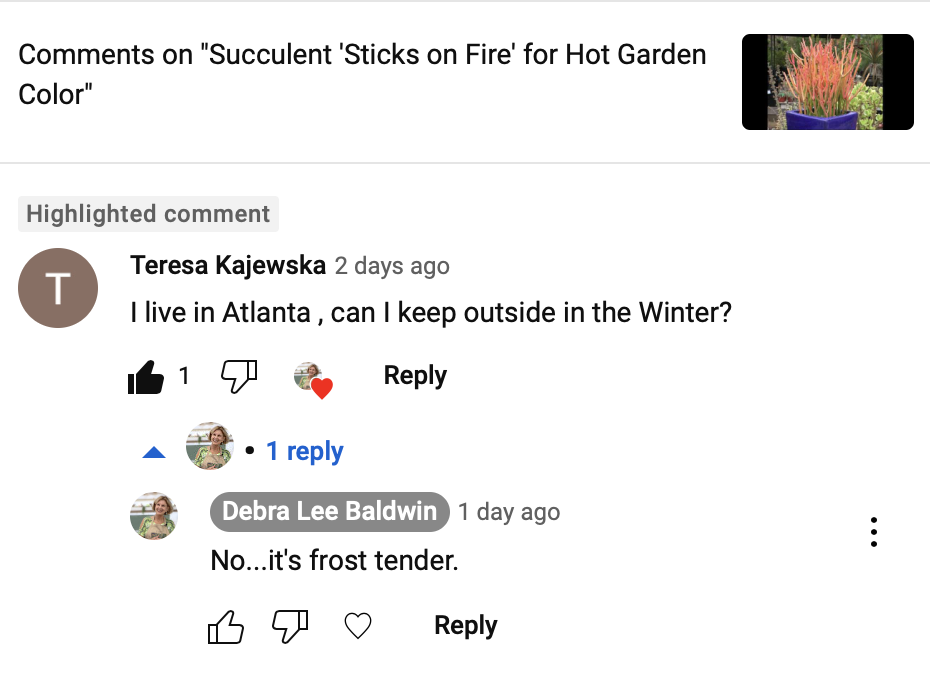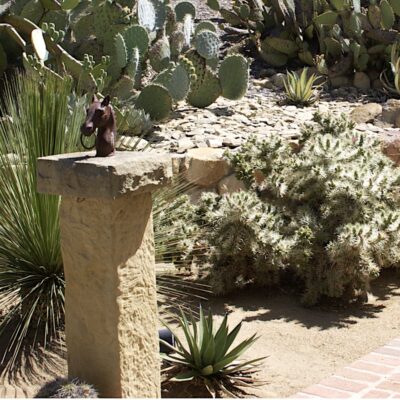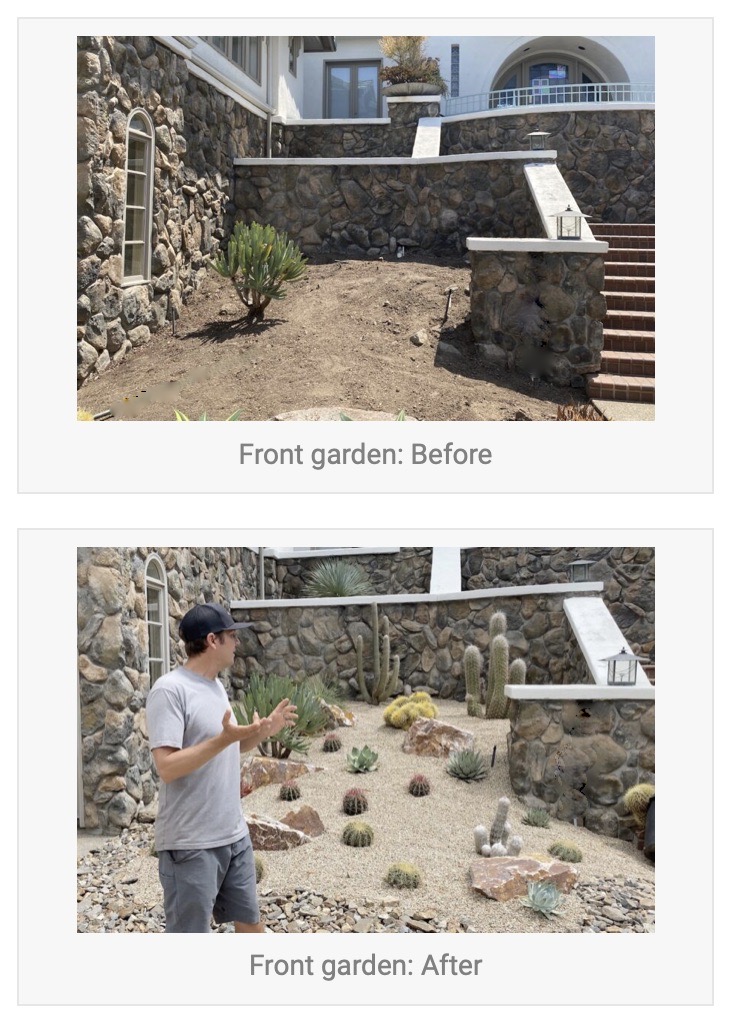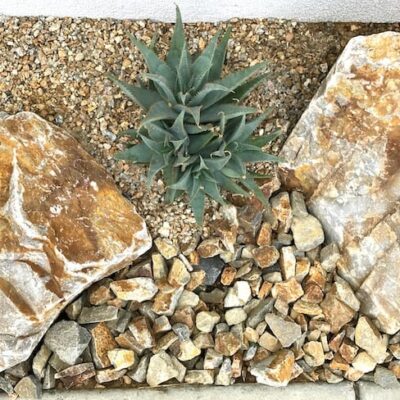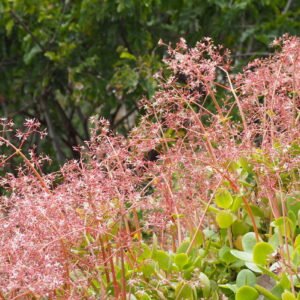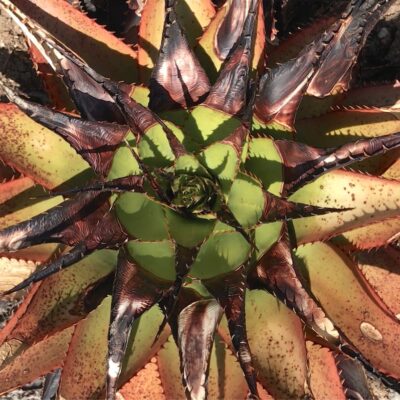These tips and ideas inspired by the annual Phoenix Garden Tour are doable throughout the Southwest. What grows effortlessly in Arizona typically fares well in Southern California---except of course for saguaro cactus.
Here I also share Desert Botanical Garden highlights; provide tips for pots, hardscape and water features; and give advice from plant pros---all with the aim of helping you make your own garden more carefree and inviting.

The Phoenix Garden Tour is sponsored by Phoenix Home & Garden magazine
Garden tours are a great way to see plants and outdoor enhancements. Check the website of Phoenix Home & Garden Magazine for more about this particular tour. Note: Editor John Roark graciously comped me on it, no strings attached.
If you've recently relocated to Arizona, don't try to grow plants from “back home.” Desert landscapes have a limited plant palette. Stick to it and you’re on your way to a beautiful, regionally appropriate garden.
Embrace cacti (well, not literally)
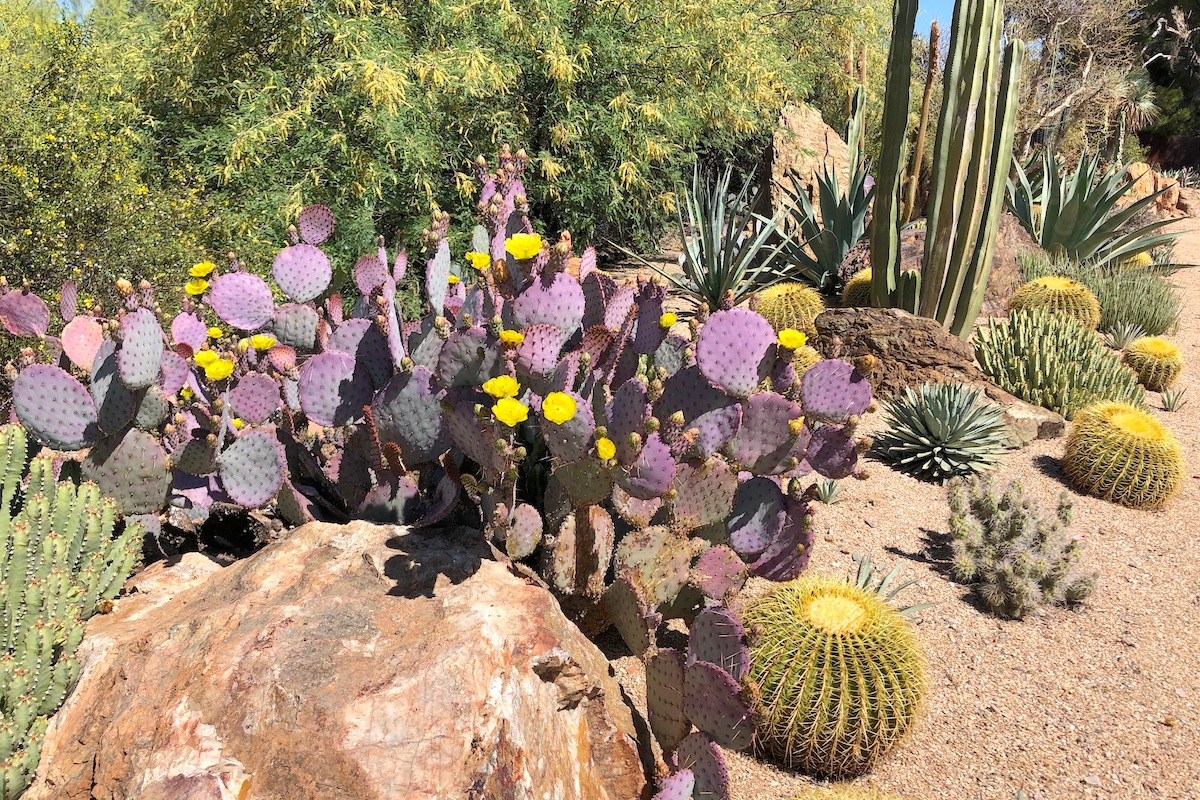
Know the three main forms of cacti: columnar, paddle and spherical. Discerning homeowners and designers consider them living sculptures.
Learn to prize opuntia. There are hundreds of varieties of paddle cactus, ranging in color from pink through shades of green to purple, with every warm flower color. The pads alone have a singular beauty. They face different directions to maximize the plant’s ability to photosynthesize.
Plant columnar cacti. Slender ceroids celebrate simplicity, throw interesting shadows, and are supremely low-maintenance.
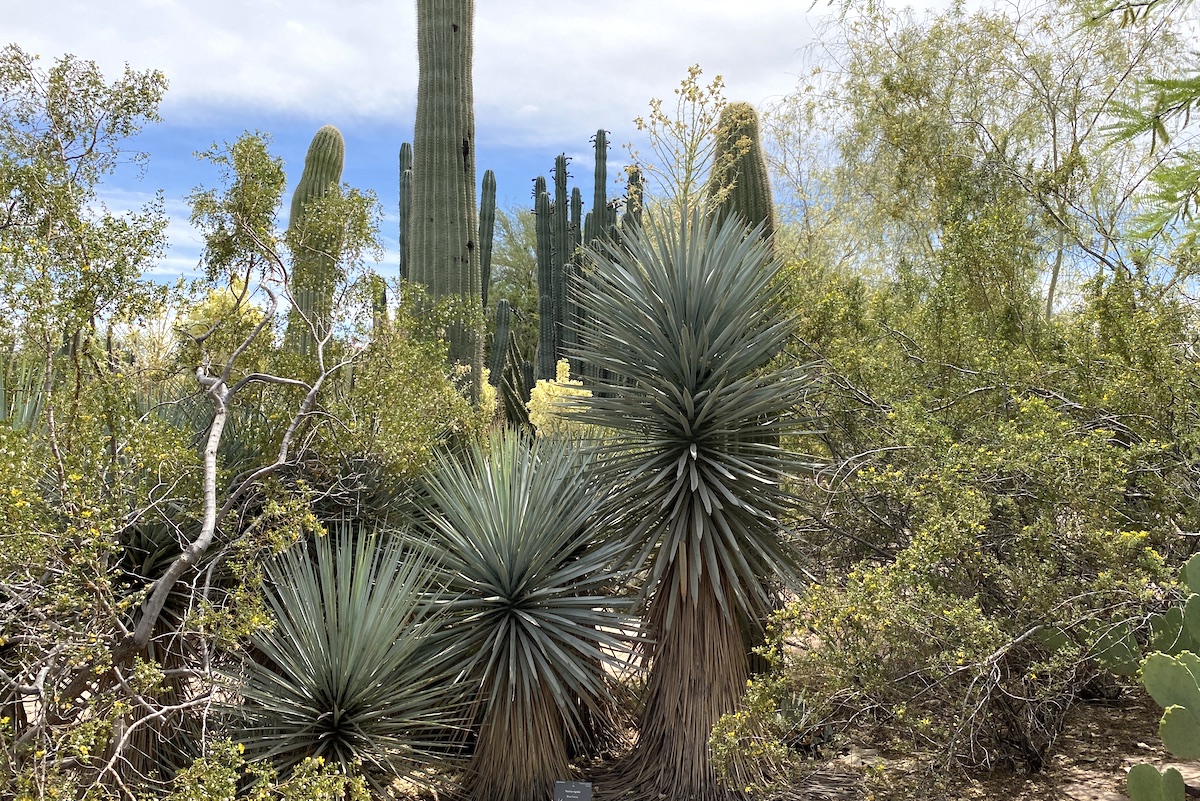
Columnar cacti and yuccas at the Desert Botanical Garden
Grow golden barrels. These spiny yellow spheres make any garden look more upscale and sophisticated. The globes contrast well with large succulents, perennials, walls and hardscape. Plant barrels in multiples and cluster in big pots.
Collect totem poles. Lophocereus schottii are nonspiny columnar cacti with intriguing lumps and bumps. Like most succulents, they start readily from cuttings. See them in Janet Orr's Paradise Valley garden.
Plant trees ASAP
Trees provide shade for people and understory plants, add height, texture and greenery, enrich soil with fallen leaves, and many bloom beautifully. Phoenix favorites include palo verde, mesquite, Texas ebony, desert willow and Caesalpinia, but there are many others.
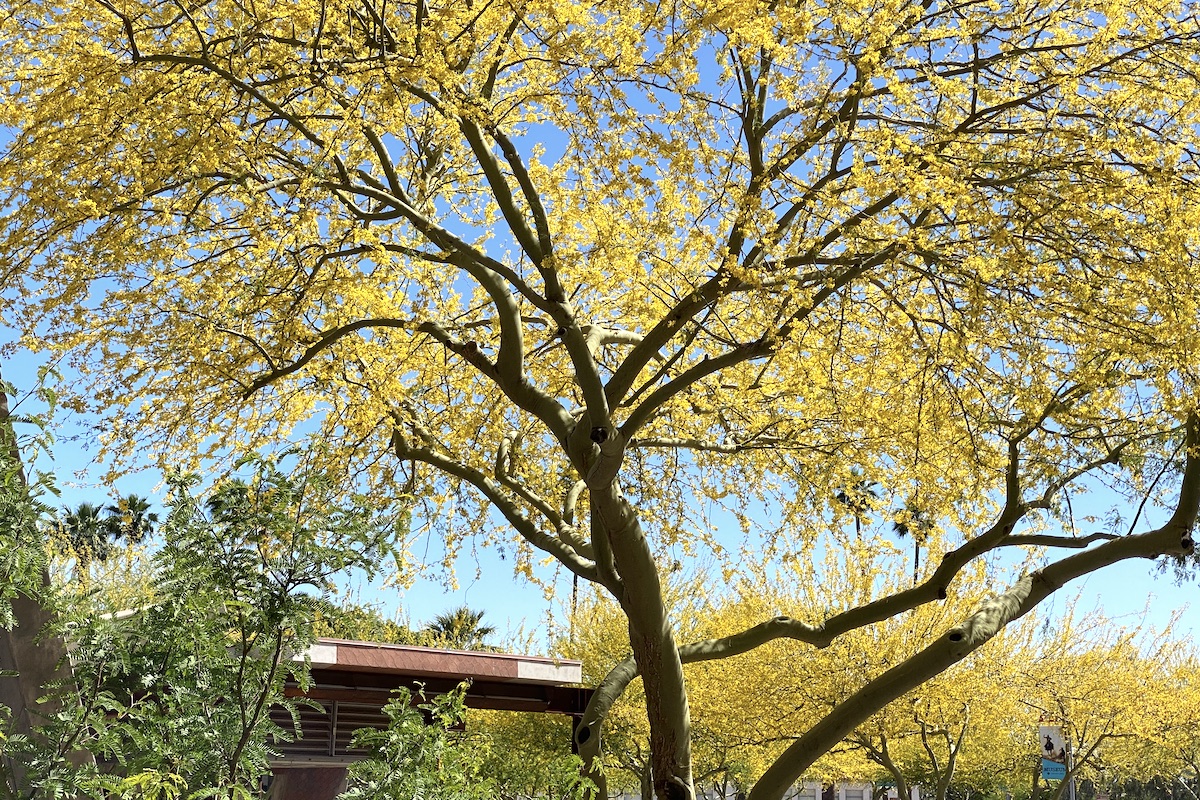
"Palo verde" refers to the trees' green bark
Use low-litter trees near pools. Palms are a good choice. Fronds glitter in the sun, produce intriguing sprays of flowers, and sound wonderful in the wind.
Heed Rich Zeh's recommendations
Aloe vera and others in this genus of Old World succulents have showy flower spikes. Most need afternoon shade.
In his Paradise Valley garden, succulent collector Rich Zeh grows Aloe brevifolia, which has a mounding, spreading growth habit; Aloe vaombe, a tree aloe from Madagascar with an unbranched trunk; Aloe cryptopoda, with red flowers; Aloe striata x maculata; Aloe dorotheae; and Aloe porphyrostachys from Saudi Arabia---an excellent aloe for the desert. (See photos in my Aloe Gallery.)
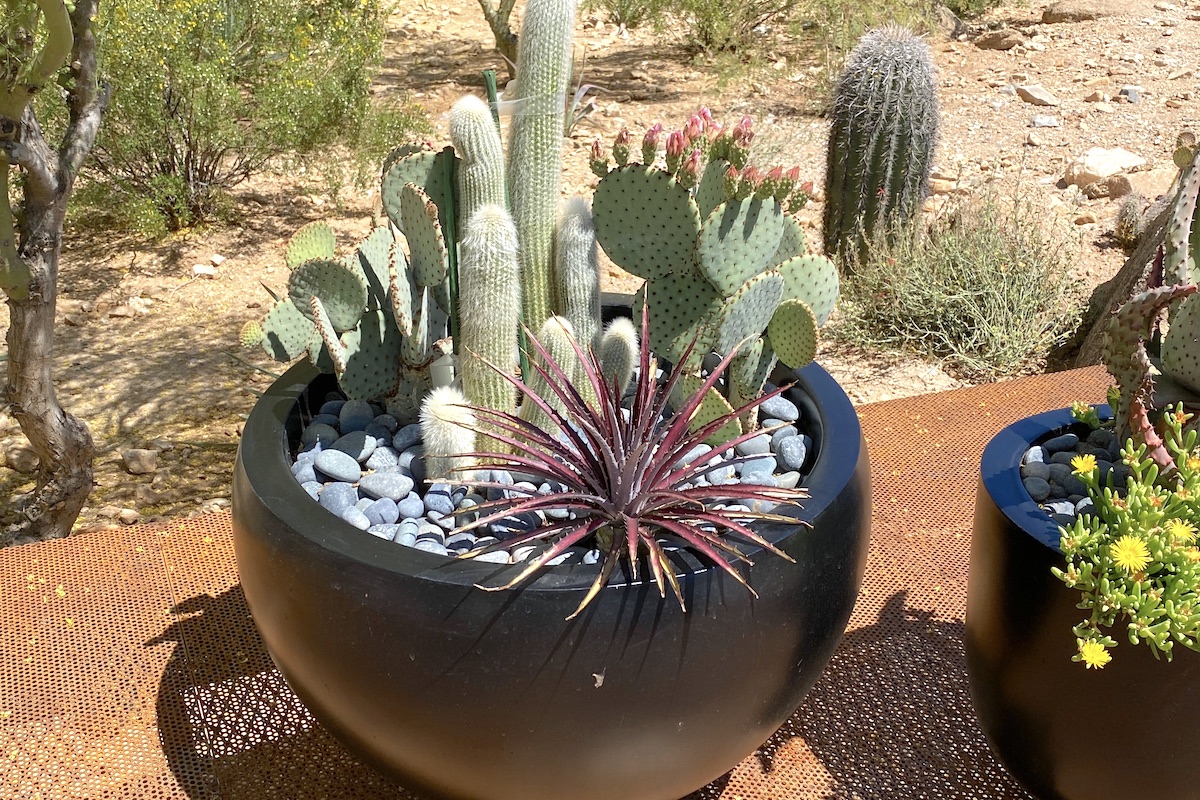
Rich also recommends dyckias, which he says are "good spreaders and can take full sun if watered."
Rich cultivates hundreds of different cacti, including one that deserves to be in more gardens: Astrophytum myriostigma. “It does great here,” Rich says. “It loves thin, poor soil and direct all-day sun.”
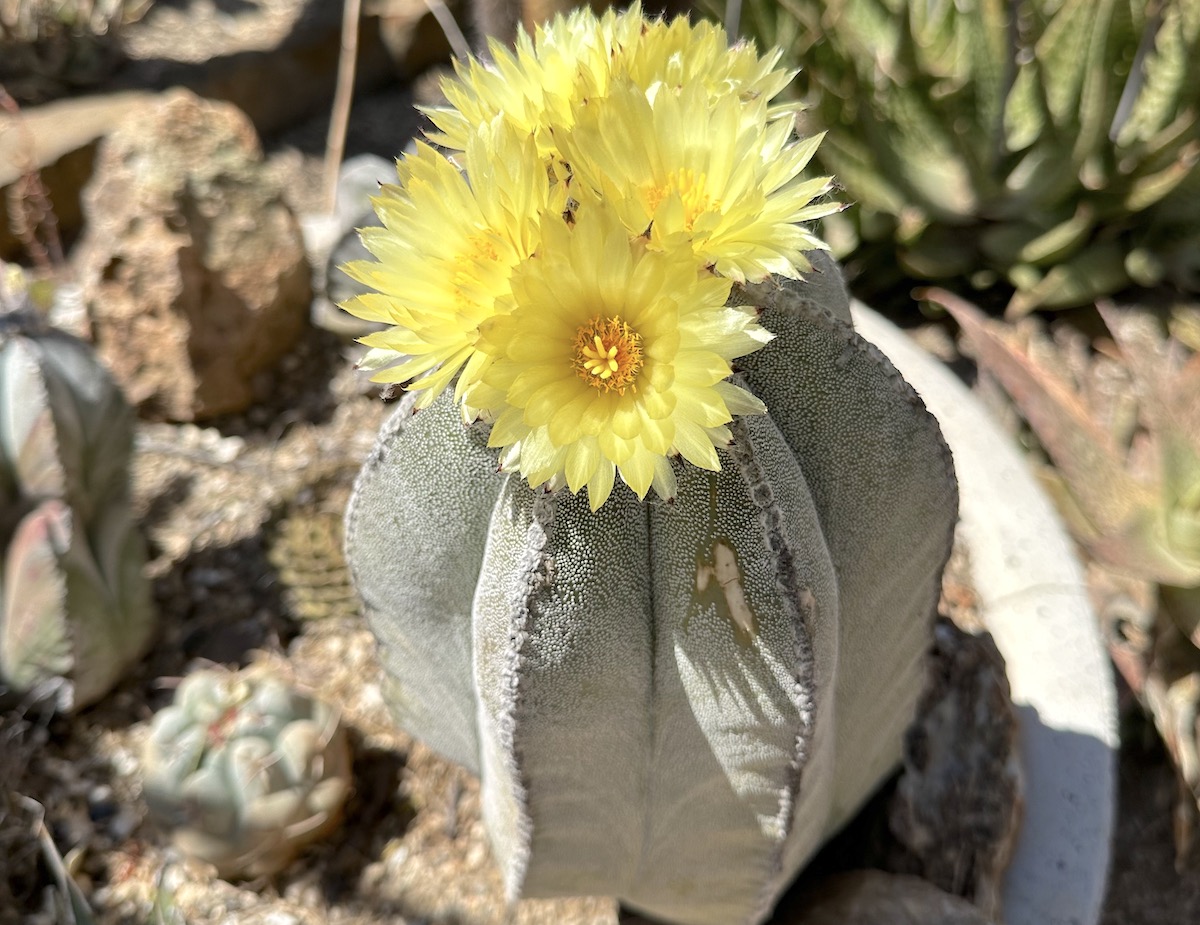
Astrophytum myriostigma, Rich Zeh photo
Use tough native succulents
Discover dasylirions. Also known as desert spoon or sotol, these slender-leaved natives are fountain-shaped, and grow to five or six feet in diameter over time. They’re hardy to zero degrees and are considered succulents because they store moisture in their cores. Dasylirions are easy to overlook, but they’re great gap-fillers, and need very little maintenance.

Dasylirion longissimum (Mexican Grass Tree)
Add color with hesperaloes, commonly known as brake lights. These thin-leaved succulents do fine in full sun. They’re often planted in Arizona street medians, and look best when massed.
Know how big an agave will get before planting it. Most species offset, producing pups where you don’t want them. Big bold Agave americana, the century plant, gets six to eight feet tall and as wide.
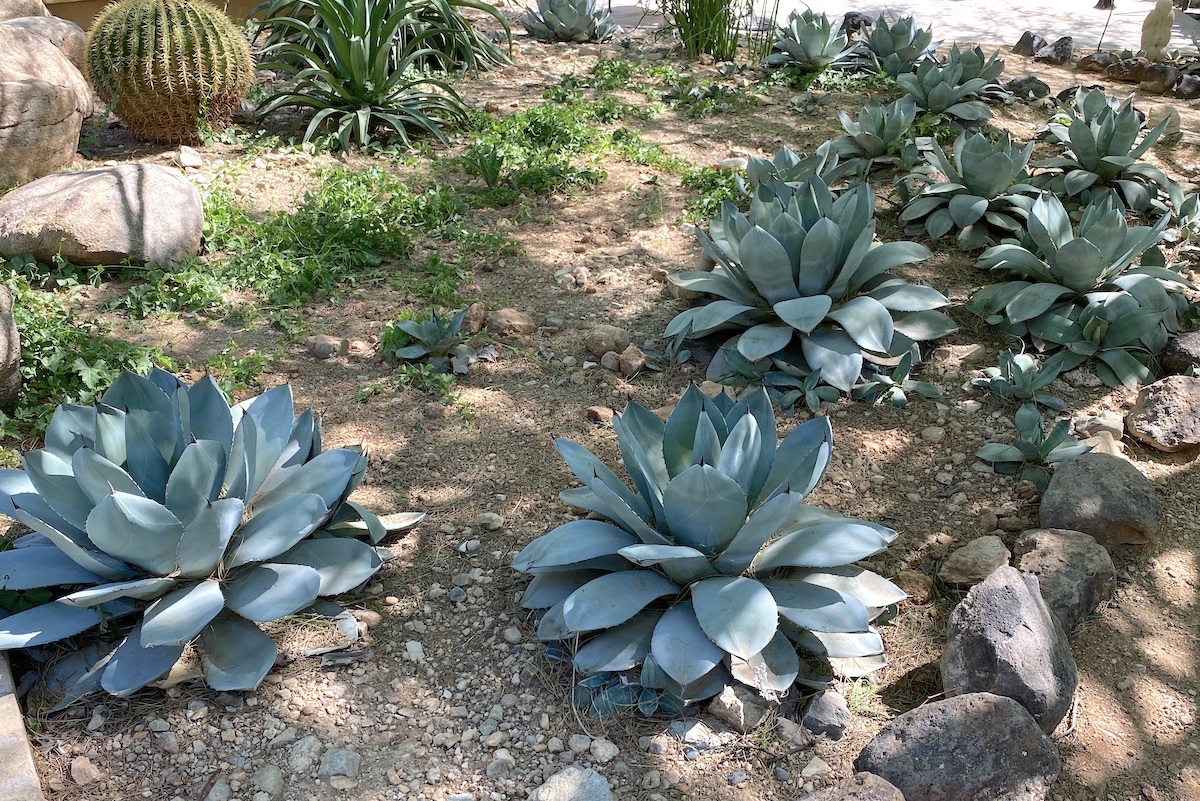
Agave parryi 'Truncata' thrives in dappled shade, and stays manageable at about 3 feet in diameter.
Add variegated agaves. Striped agaves look amazing when grouped or planted in multiples. Keep in mind that a variegate’s paler areas, having less pigment, tend to be more sensitive to sunburn than the darker green tissue. These are Agave desmetiana with ferocactus in the foreground.

Agave americana 'Marginata' with orange mallow and other spring flowers
Plant Yucca species. These succulents store moisture in their trunks. They make good garden accents and produce large sprays of cream-colored flowers. My favorite is lovely blue Yucca rostrata.
Other must-have plants
Grow bougainvillea. Anyone who thinks desert gardens aren’t colorful needs to see all the red bougainvillea in Phoenix.

Isn’t this white variety of bougainvillea lovely against a white wall?
Plant Portulacaria afra (elephant’s food) in pots and terraces. It’s one of the best plants for carbon sequestration, and can handle desert climate extremes. Grow the pendant, solid-green variety and give it half a day’s shade.
Grow ornamental grasses. Their feathery textures contrast beautifully with walls and large hefty plants. Ornamental grasses have a similar shape as dasylirions, but need more water and to be cut nearly to the ground in winter.
Pink muhly grass is a favorite of Phoenix landscape consultant and "AZ Plant Lady" Noelle Johnson, author of Dry Climate Gardening (affiliate link). I’ve yet to grow it in my inland Southern California garden, and Noelle has convinced me I should.
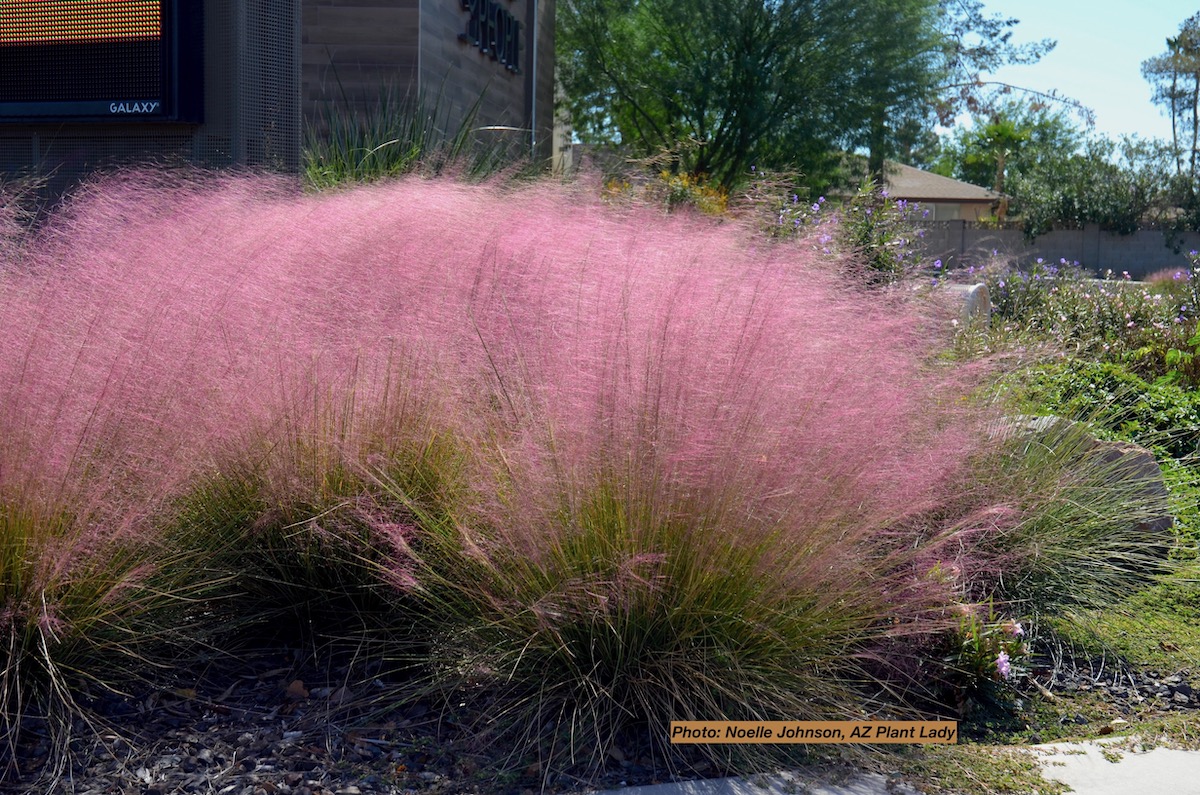
Pink muhly grass has amazing color, texture and motion (in the breeze).
Garden Enhancements
Use planters to define sitting areas. Steel box planters (affiliate link) that develop a rust patina come in a variety of sizes. In these grow Russelia equisetiformis, commonly called firecracker plants, that attract hummingbirds. Palo verde trees add bright fluffy color and provide a privacy screen.
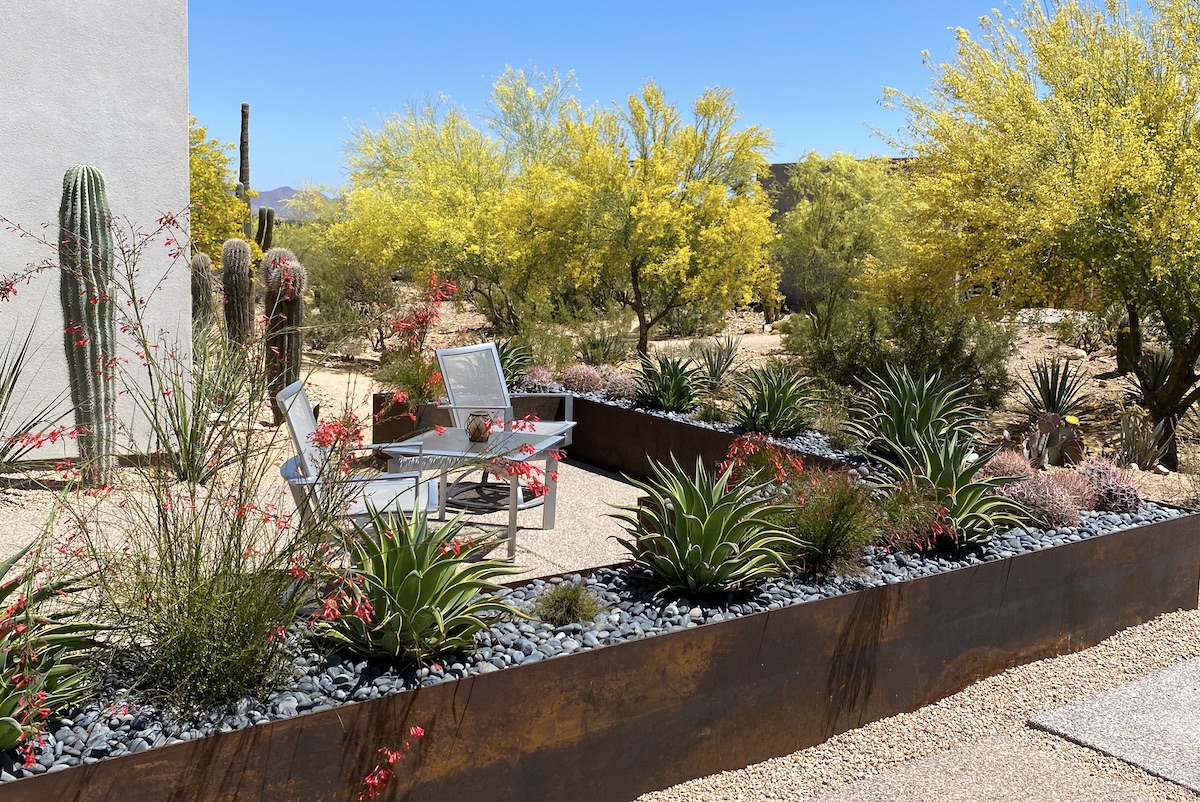
A topdressing of river rock echoes the silvery gray of the table and chairs.Add a fountain. Splashing water sparkles, lends motion, and provides wild birds a place to drink and bathe. In urban areas, the sound of dripping water helps drown out neighborhood noise and muffles private conversations.
Use large pots for focal points. Rather than a lot of small pots, which can cause clutter, go with a large one. A pot with the right scale and proportion for your entryway is a good investment.
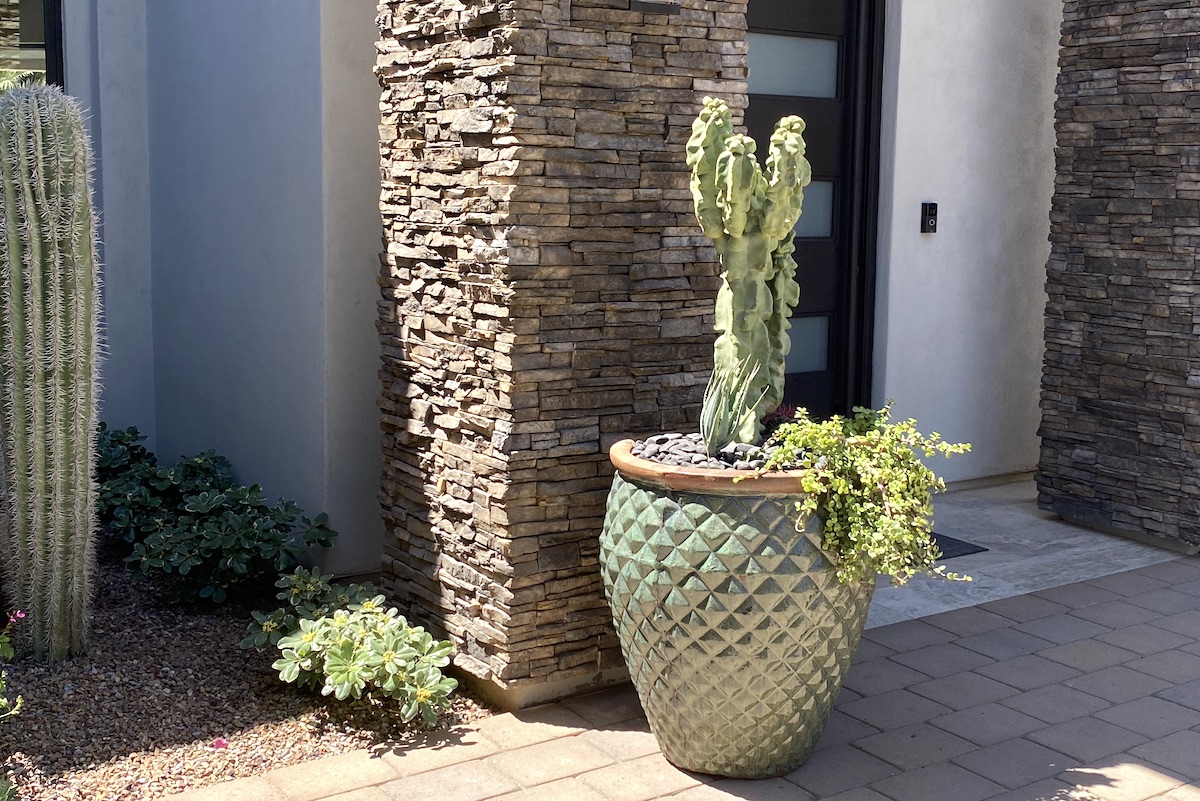
I love the diamond texture on this pot...and its color.
Install misters. One highly rated cooling system (affiliated link) that costs a paltry $15 on Amazon has 33 feet of outdoor misting line and 11 brass nozzles. It attaches to a standard hose bib and cools the surrounding air temperature by as much as 50 degrees F.
Include work by local artists. The finishing touch for your garden is artwork that withstands the elements and delights you. Not to mention it’s fun to explain to visitors how and why you chose it.
Enjoy shadows. Tucked inside this screened vegetable garden is a small metal table and chairs made of wire fashioned into circles. As the sun slowly moves, soothing shadows shift and overlap.
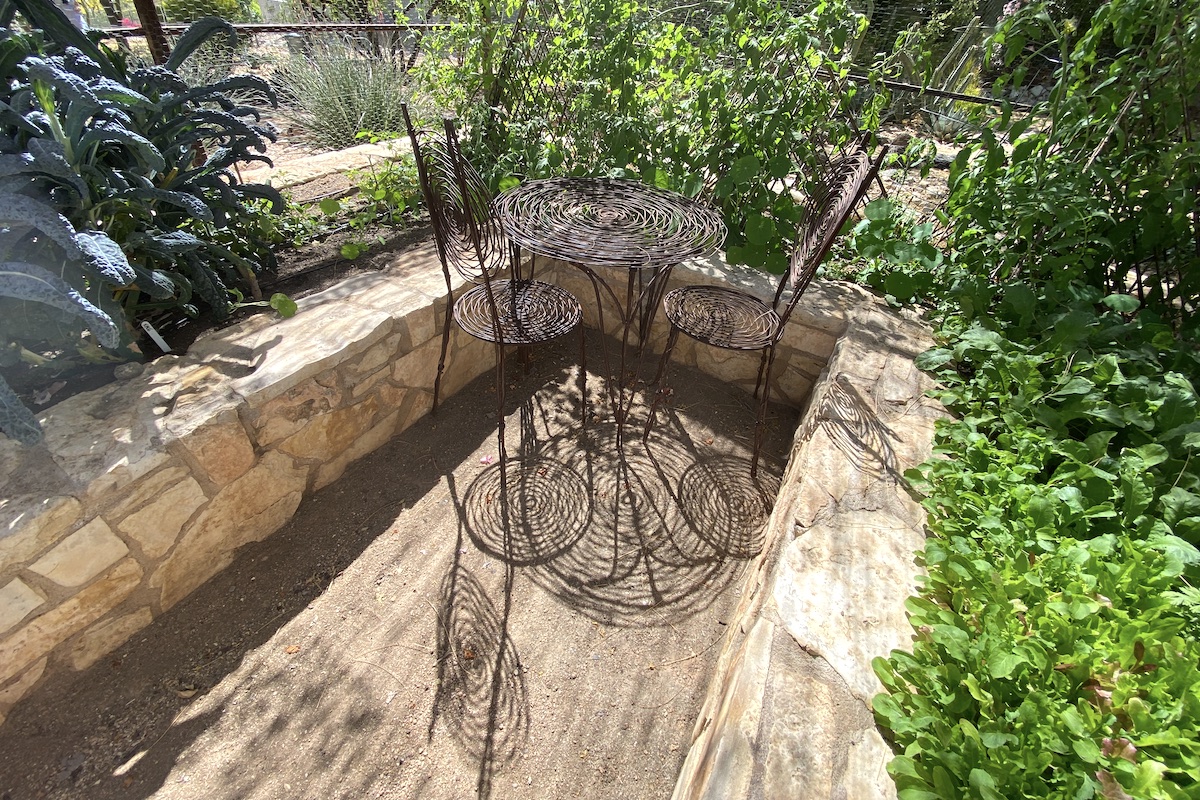
I didn't want to leave this garden because of the shadows.
Install artificial turf. Yes, it’s OK. Lawns need too much water and maintenance. Yet who doesn’t love the look? A swath of emerald green is soothing and refreshing.
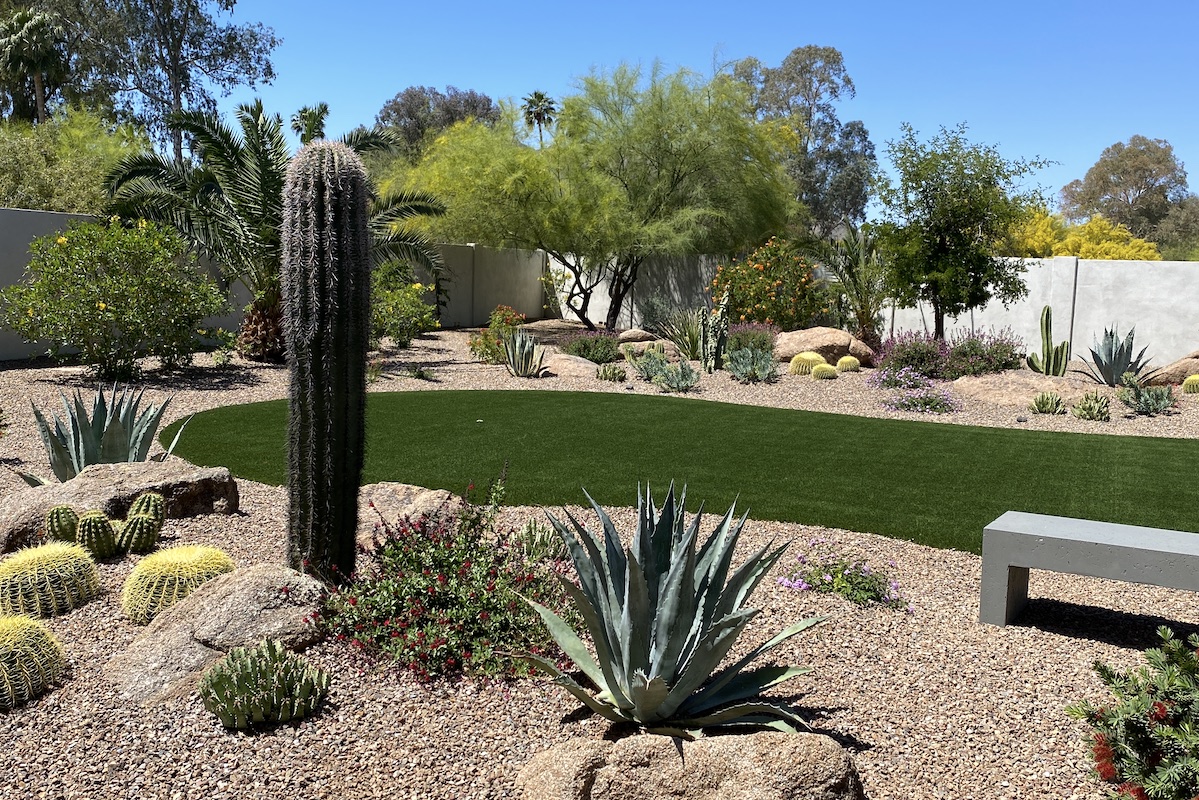
This "lawn" doubles as a putting green.
Go with turquoise for your pool. A dark bottom absorbs the sun's heat and increases the water temperature, which is OK near the coast but uncomfortably warm where temps rise into the 90s and you need your pool the most.

Turquoise tiles mirror the sky and resemble blue ocean water near a white-sand beach.

Speaking of turquoise, Phoenix Home & Garden editor John Roark and I matched the pool. Photo: Lori Johnson
Related Info on This Site
See Rich Zeh’s 30-Year Succulent & Cactus Collection
Rich Zeh has an Aladdin’s trove of cacti and succulents. “I’m pretty much maxed out on space,” he says of his one-acre garden and greenhouse in Paradise Valley (Phoenix) Arizona.
Tour an Arizona Estate Garden
For 15 years majordomo Woody Woodruff has kept everything running smoothly for billionaire homeowners on 7 acres in Arizona’s Sonoran Desert, in Paradise Valley NE of Phoenix. His love of his “babies”—thousands of cacti and succulents—is evident, as is his Southern drawl.
Design Ideas from an Arizona Artist’s Garden
Wait ’til you see these desert garden design ideas at Arizona artist Janet’s Orr’s home! Her whimsical outdoor gallery shows her eye for design, skill as a ceramic artist, love of color, and superb succulent savvy.
The post Great Plants and Ideas from Arizona Gardens appeared first on Debra Lee Baldwin. Copyright © Debra Lee Baldwin.
from Debra Lee Baldwin https://ift.tt/DgcKErY
via IFTTT

